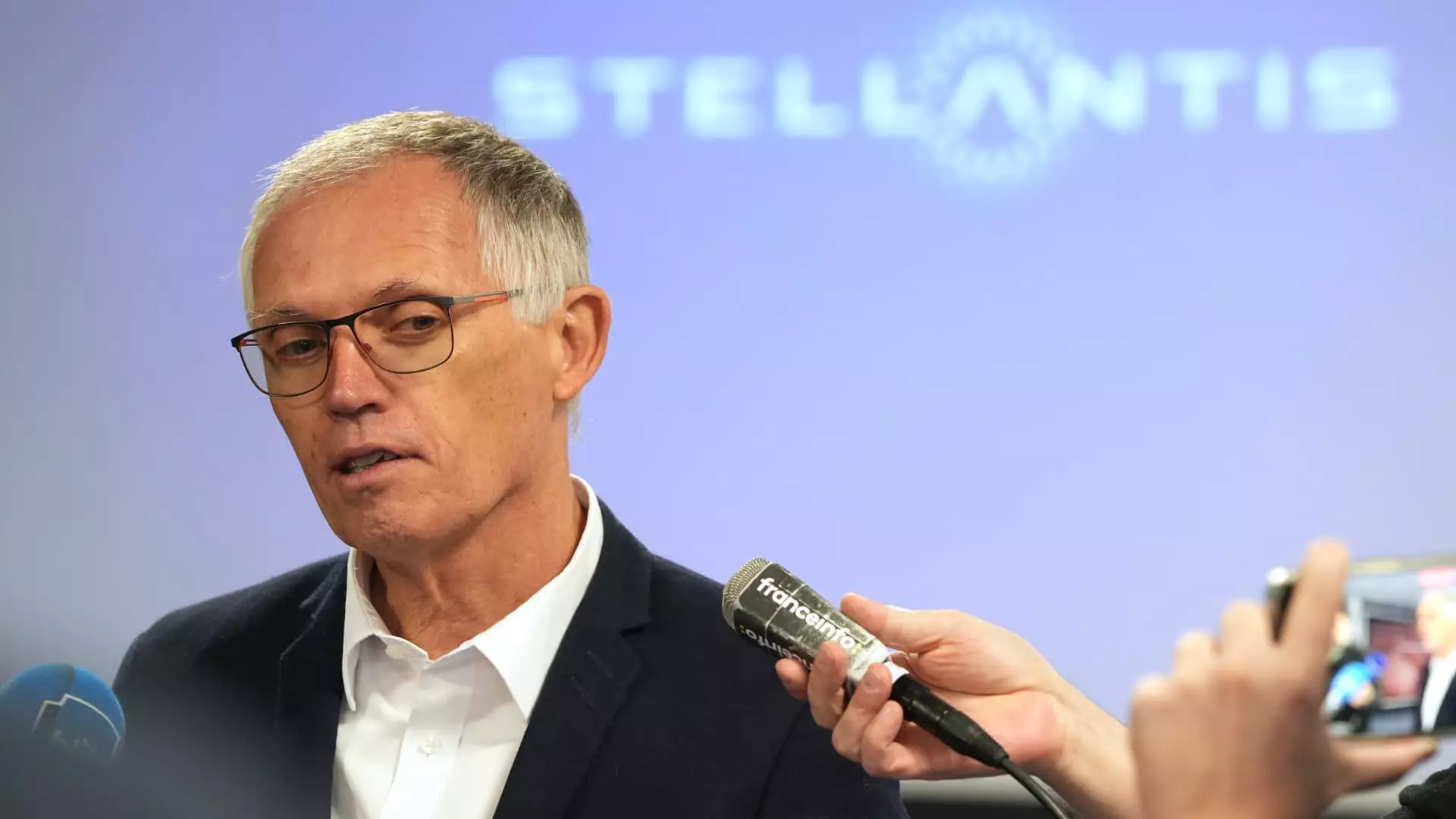The recent resignation of Carlos Tavares as the CEO of Stellantis has sent shockwaves through the automotive industry. Announced on Sunday, Tavares’ exit is attributed to “different views” emerging between him and the board of directors, highlighting a growing rift within one of the world’s largest automotive groups. This decision marks a significant departure from the collaborative leadership style that characterized Stellantis since its inception.
Stellantis, formed from the merger of Fiat Chrysler Automobiles and PSA Groupe in 2021, has seen Tavares at the helm from its conception. His leadership was initially celebrated for effectively merging two automotive powerhouses and steering the company towards profitability. However, the abrupt acceptance of his resignation by the company’s board indicates underlying tension that had not previously been acknowledged publicly. The statement from Henri de Castries, Stellantis’ senior independent director, suggests that the once-aligned interests of shareholders, the board, and Tavares are now misaligned, leading to this unexpected outcome.
In light of Tavares’ departure, Stellantis has indicated that it is actively engaged in the search for a new CEO, with expectations to finalize this process within the first half of next year. Until then, interim leadership will be assumed by John Elkann, the chairman of the board, which raises questions about the company’s strategic direction during what could be a critical transitional phase.
Tavares’ resignation comes amidst troubling financial results for Stellantis. The automaker has faced a steep decline in annual guidance, particularly following a significant drop in net revenues of around 27% in the third quarter. Compounding these issues, global vehicle sales saw a year-over-year decline of approximately 20%. Even with Tavares’ previous attempts to rectify perceived “arrogant” missteps in the U.S. market—traditionally a vital source of revenue—his leadership was unable to reverse the damaging trends affecting the company.
The ongoing challenges faced by Stellantis cannot be understated. High vehicle prices and insufficient investment in new models are symptomatic of deeper operational issues. Analysts and industry insiders alike are increasingly vocal about their concerns regarding Stellantis’ strategic approach, particularly in a competitive landscape where innovation and adaptability are paramount.
Central to Tavares’ strategy was a stringent cost-cutting program, reportedly yielding savings of around 8.4 billion euros ($9 billion) from the merger. While reducing expenditures may have been a necessary step for Stellantis’ short-term positioning, this aggressive approach has drawn considerable criticism. Current and former company executives articulated concerns regarding the excessive nature of these cuts, suggesting they may have adversely affected operational efficiency and capacity to respond to market demands.
Furthermore, significant job cuts, amounting to 15.5% of Stellantis’ workforce since late 2019, have generated turmoil within the company. The United Auto Workers union has vocally opposed these layoffs amid fears that they threaten job security and undermine employee morale. As thousands of production workers in the U.S. and Italy face job uncertainty, the backlash against Tavares has intensified. The relationship between Stellantis and its dealership network has also soured, as rising inventory levels remain a critical point of contention with insufficient corporate support for sales initiatives.
As Stellantis prepares to transition to new leadership, the company faces a daunting challenge: restoring stability amidst financial unease and operational miscalculations. The renamed interim executive committee under John Elkann will need to reassess existing strategies to revitalize brand offers and revamp dealership relations while simultaneously managing concerns from the labor force.
Moreover, it will be vital for Stellantis to engage directly with its shareholders and address their concerns regarding the executive leadership dynamics that led to Tavares’ unexpected resignation. The next CEO will undoubtedly be tasked with reversing current trends and redefining Stellantis’ approach to market demands, innovation, and workforce relations, all while navigating an increasingly competitive global automotive landscape.
Tavares’ resignation may very well mark a pivot point for Stellantis, with the potential to recalibrate its corporate strategies and foster renewed confidence among stakeholders. The road ahead will require careful navigation through an environment shaped by both industry-wide challenges and internal governance dynamics that have come to the forefront in this unfolding narrative.


Leave a Reply